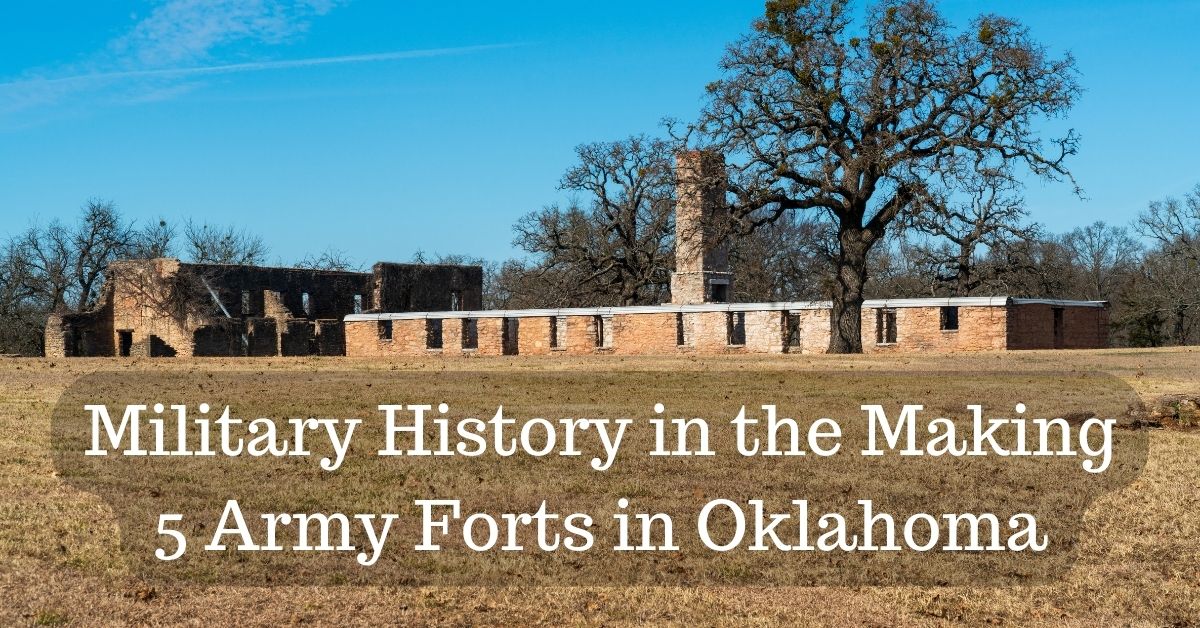The state of Oklahoma houses numerous crucial military installations and forts that play a vital role in the United States Department of Defense operations. These bases hold immense historic and strategic significance, with some of them being operational since the time of the Civil War.
One of Oklahoma’s most prominent military installations is Fort Sill, a United States Army post located north of Lawton, covering around 94,000 acres.
This National Historic Landmark is the home of the United States Army Field Artillery School and the Marine Corps site for Field Artillery MOS school.
Another notable installation is the McAlester Army Ammunition Plant in central Oklahoma, which plays a crucial role in military logistics and ammunition production.
These military bases and army forts in Oklahoma contribute to the country’s defense and significantly impact the local communities and economies. Their presence also allows for thorough training, equipping soldiers with the skills to protect and defend the nation effectively.
History of Army Forts in Oklahoma
Early Settlement and Expansion

During the early settlement and expansion of the United States, military bases played a crucial role in protecting and managing newly acquired territories. In Oklahoma, forts such as Fort Coffee and Fort Gibson were established for this purpose.
The federal government used these military posts to maintain order and protect white settlers from potential conflicts withIn the state of Oklahoma. The history of early military forts reveals their significant impact on the region’s development, from Indian Territory to United States’ expansion.
Forts such as Fort Gibson, Fort Sill, and Fort Towson played crucial roles in both the Civil War and Indian Wars, interacting with Plains tribes and facilitating the growth of Oklahoma City.
Preserved by the Oklahoma Historical Society, these military posts remind us of the state’s rich history, including the stories of Buffalo Soldiers from the 10th Cavalry and the Field Artillery School at Fort Sill.
Today, installations like Tinker Air Force Base and Vance Air Force Base carry on this legacy of service, contributing to the state’s economy and national defense.
Looking back at frontier forts like Fort Supply and Camp Wichita, it’s evident that the U.S. government established a strong military presence in the region. They did this with the help of people like Quanah Parker and Ben Clark.
This presence played a major role in shaping the current state of Oklahoma, with a lasting impact on American Indians and white settlers alike.
Role in the Indian Wars
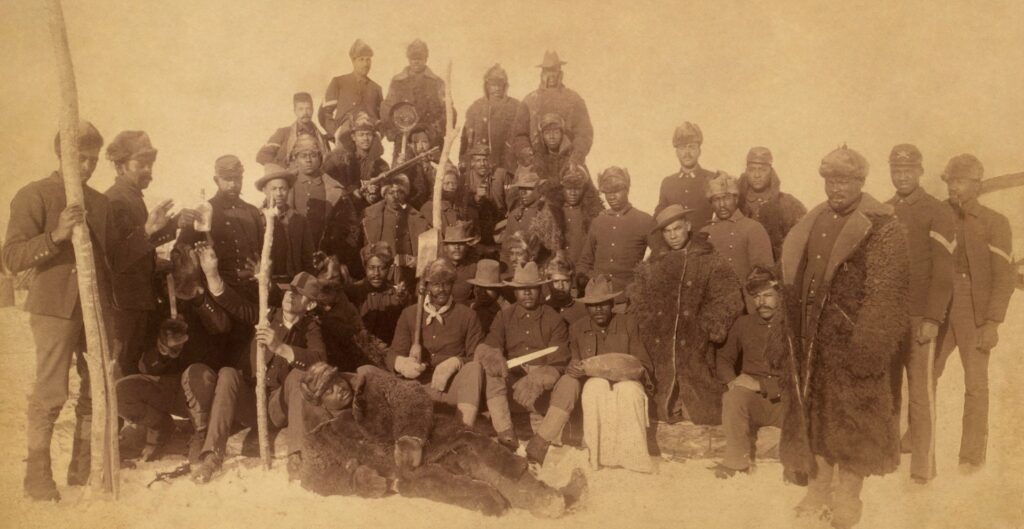
As the United States expanded westward, conflicts between American Indians and settlers increased. In response, the US Army established frontier forts in Indian Territory, including Fort Supply, Fort Washita, and Fort Towson.
These forts played a critical role in the Indian Wars. Providing protection and support for settlers and housing the Buffalo Soldiers, including the 10th Cavalry, who were tasked with managing the Plains tribes.
World War I and II

As the world plunged into global conflicts, Oklahoma’s military installations adapted to meet new challenges. Fort Sill played a significant role during World War I, overseeing the training of soldiers for combat in France. The fort, now a National Historic Landmark, became the United States Army Field Artillery School.
Oklahoma established various army bases throughout World War II, including Tinker Air Force Base, Lawton Municipal Airport, Vance Air Force Base, and Altus Air Force Base. This helped support the mobilization of forces and resources.
Cold War Era
Oklahoma remained a vital hub for United States military operations during the Cold War.
New military installations like Camp Wichita and existing facilities like Fort Sill and Fort Reno were essential in tracking enemy movements. They were also helpful in conducting training exercises and coordinating nationwide security efforts.
Modern Period

In the modern era, Oklahoma’s military bases continue to grow and adapt to meet the ever-changing demands of national defense. The state is home to several critical facilities, including the Field Artillery Training Center at Fort Sill.
These facilities train soldiers for the US Army, Marine Corps, and other allied forces. Additionally, the Oklahoma Army National Guard provides security and support to the state and the nation.
5 Army Forts in Oklahoma
Fort Sill
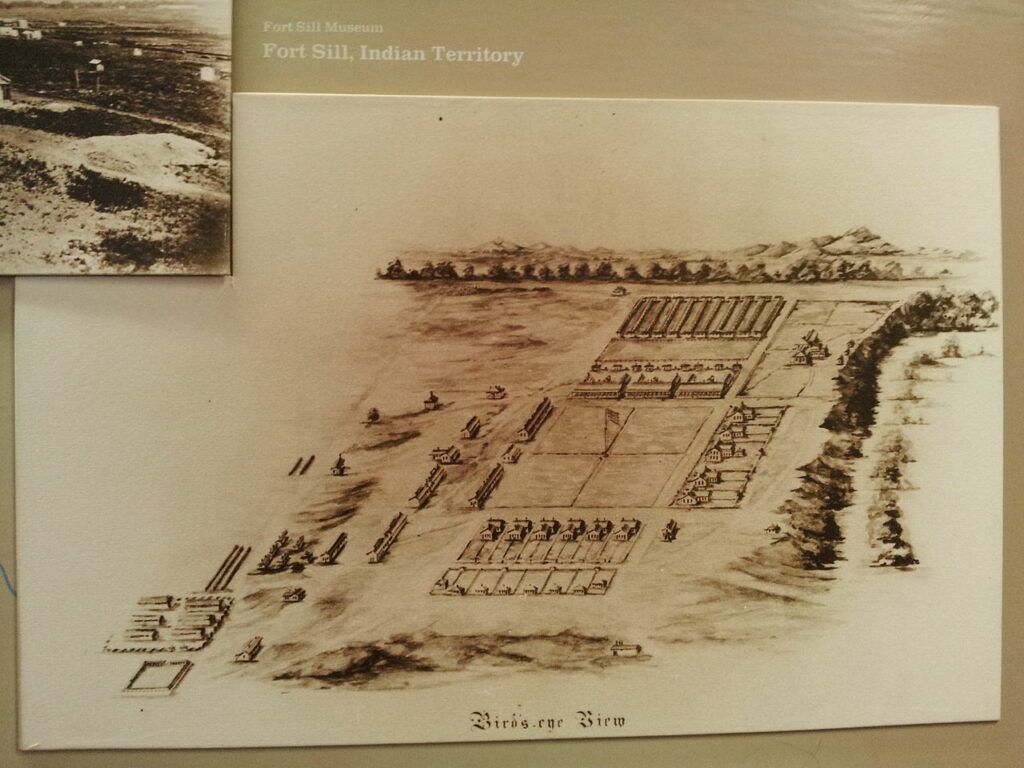
Fort Sill is located in southwestern Oklahoma, near the city of Lawton. It was established in 1869 as a frontier outpost to protect settlers and travelers from Native American attacks.
Today, Fort Sill is home to the Fires Center of Excellence, which trains soldiers in artillery and air defense operations.
One of the most notable features of Fort Sill is the Field Artillery Museum, which showcases the history of the artillery branch of the U.S. Army. The museum features exhibits, including artillery pieces from various eras, uniforms, and photographs.
Visitors can also view a collection of military vehicles and equipment and learn about the history of the U.S. Army’s field artillery.
In addition to its military training facilities and historical attractions, Fort Sill is also home to several natural landmarks.
The Wichita Mountains Wildlife Refuge, located just north of the installation, allows visitors to explore a diverse range of habitats, including prairies, forests, and mountains.
The refuge is home to various wildlife, including bison, elk, and prairie dogs, and offers hiking, camping, and viewing opportunities.
Fort Sill is an essential military installation with a rich history and diverse attractions. Whether you’re interested in military history, nature, or outdoor recreation, there’s something for everyone to enjoy at Fort Sill.
Fort Gibson
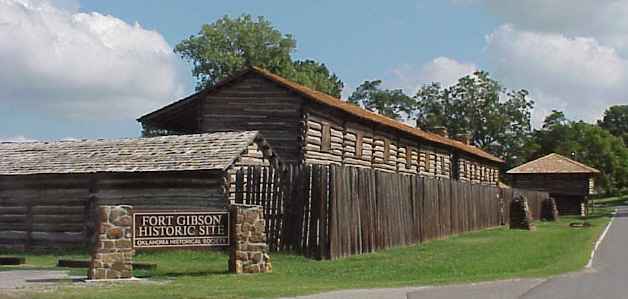
Fort Gibson is a historic military site in northeastern Oklahoma near the town of Fort Gibson. It was established in 1824 as a frontier outpost to protect the Cherokee Nation from encroaching settlers and to maintain peace between various Native American tribes.
The fort played a significant role in the Indian Wars of the mid-19th century and served as a staging ground for troops during the Civil War.
Today, Fort Gibson is a National Historic Site and offers visitors the opportunity to explore the fort’s rich history. The site features several restored buildings, including the original barracks, officer’s quarters, and hospital. Visitors can also view a collection of artifacts and exhibits that highlight the fort’s role in the region’s history.
In addition to its historical attractions, Fort Gibson is also home to several outdoor recreational opportunities.
The nearby Fort Gibson Lake offers fishing, boating, and swimming opportunities. The surrounding hills and forests provide hiking, camping, and wildlife viewing opportunities.
Fort Gibson is a must-visit destination for anyone interested in the history of the American frontier. With its well-preserved buildings and fascinating exhibits, the fort offers visitors a glimpse into the daily lives of soldiers and civilians during a turbulent period in American history.
Fort Reno
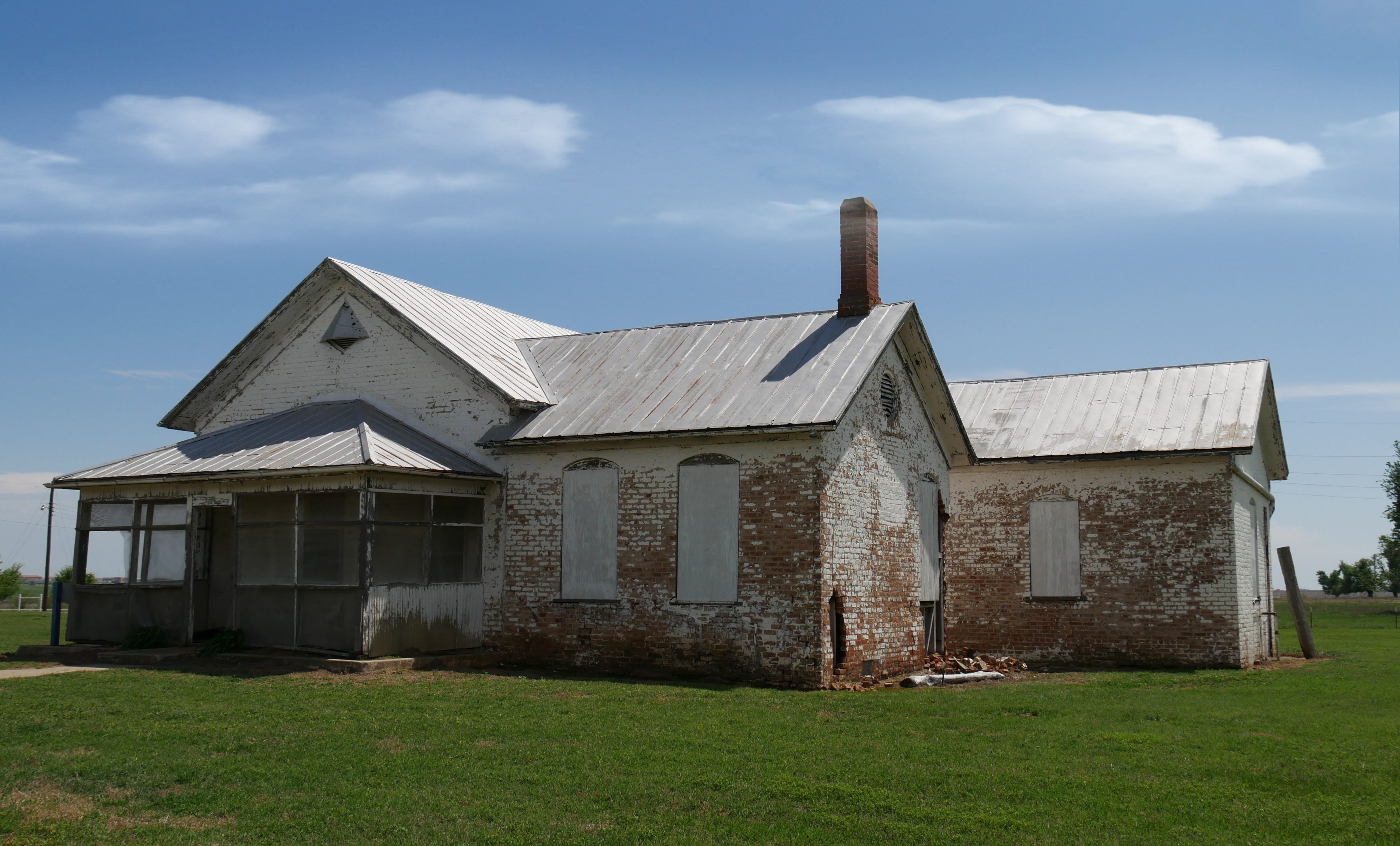
Fort Reno is located west of El Reno, Oklahoma. It was established in 1875 as an army cavalry post to protect settlers and travelers from Native American attacks. The fort played a significant role in the Indian Wars of the late 19th century and served as a base for the U.S. Cavalry until 1907.
Today, Fort Reno is a National Historic Landmark that allows visitors to explore the fort’s rich history. Visitors can also view a collection of artifacts and exhibits that highlight the fort’s role in the region’s history.
In addition to its historical attractions, Fort Reno has plenty of outdoor recreational opportunities. The fort is located along the historic Route 66, which allows visitors to explore the area’s rich cultural heritage.
Fort Reno is a fascinating destination for anyone interested in the history of the American frontier.
Fort Supply

Fort Supply was a United States Army post established in 1868 in Indian Territory to protect the Southern Plains. It was located in present-day Woodward County, Oklahoma, just east of the town of Fort Supply. Named initially Camp Supply, it was established as the supply base for Maj. Gen. Philip H. Sheridan’s.
This was done during the winter campaign against the American Indian tribes of the southern Great Plains. From this post, Lieutenant Colonel George A. Custer led the Seventh US Cavalry south to the Washita River and destroyed the village of Cheyenne Chief Black Kettle.
Today, Fort Supply is a small town in Woodward County, Oklahoma, located approximately 8 miles northwest of Woodward, the county seat. The town has a population of around 330 people, according to the 2010 census.
Fort Supply is home to several historic landmarks, including the Fort Supply Historic Site. This site includes numerous historic graves and artifacts from the fort’s history.
In addition to its historical attractions, Fort Supply is also home to many outdoor recreational opportunities. The nearby Alabaster Caverns State Park allows visitors to explore a unique underground cave system.
In contrast, the nearby Boiling Springs State Park provides hiking, camping, and wildlife viewing opportunities.
Fort Towson
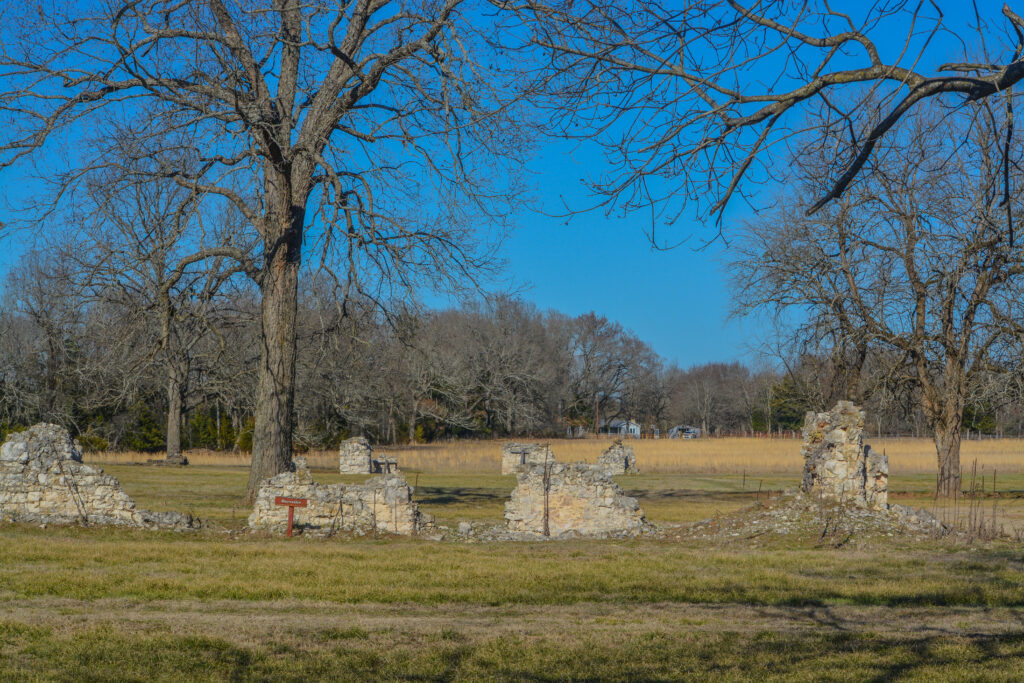
Fort Towson is located in southeastern Oklahoma, near the town of Fort Towson. It was established in 1824 as a frontier outpost. That protects the Choctaw Nation from encroaching settlers and maintained peace between various Native American tribes.
The fort played a significant role in the Indian Wars of the mid-19th century. And It served as a staging ground for troops during the Civil War.
Constructed near the Red River, Fort Towson played a strategic role as an early military post in the Indian Territory during the first half of the 19th century. It was an essential outpost during the Civil War, housing Confederate forces, and later served as the location for the surrender of the last Confederate land forces in 1865.
Cultural and Historical Significance
The establishment of military forts in Oklahoma can be traced back to the early 1800s. These outposts played crucial roles in shaping the history and development of the region, particularly during the Civil War and Indian Wars.
As white settlers expanded into Indian Territory, these army forts served multiple purposes. Protecting settlers and federal property to managing relations and conflicts with American Indian tribes.
Many of Oklahoma’s forts have since become landmarks of historical significance. Preserving the state’s rich military and cultural past. For instance, Fort Gibson, a National Historic Landmark, is one of the oldest forts in Oklahoma, dating back to 1824. Over its history, Fort Gibson offered essential support during the Civil War, Indian Wars, and the resettlement of American Indians.
Similarly, other military forts, like Fort Towson and Fort Washita, carry significant historical and cultural value for the state. Fort Towson’s strategic location is along the Red River. Its role in the forced relocation of American Indians and its occupation by Confederate forces. This highlights the importance of such military installations in shaping Oklahoma’s history.
Some of these forts also played a part in the emergence of the legendary Buffalo Soldiers, African American soldiers of the 10th Cavalry, and other units. Fort Sill, currently an active army installation, contributed to training and supporting Buffalo Soldiers during their service in the Plains Indian Wars.
Other Military Sites
Military sites like the Field Artillery School at Fort Sill remain prominent as they cultivate servicemen and servicewomen’s skills and knowledge.
Many of these early military forts and installations maintain relevance today.
Tinker Air Force Base, Vance Air Force Base, and the Oklahoma Army National Guard are facilities that actively support the Department of Defense, Homeland Security, and overall U.S. military readiness.
These facilities play an important role in maintaining the country’s military readiness.
The State of Oklahoma and organizations like the Oklahoma Historical Society continually work to preserve and share the stories of these historic forts. They are significant in the state’s military history.
By fostering awareness and appreciation for these sites, they carry forward the legacy of these important military installations, their missions, and those who served in them.
Preservation and Tourism
Museums and Historic Sites
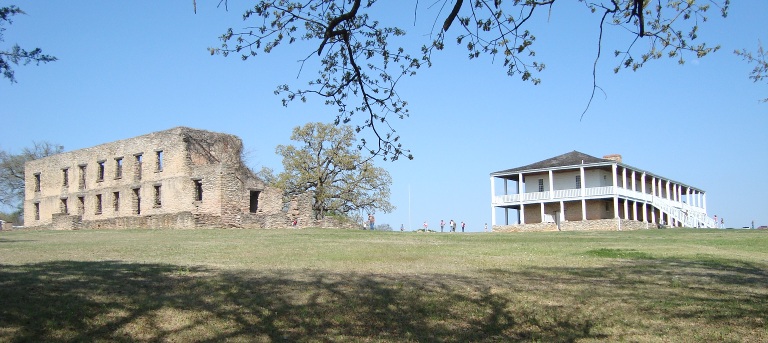
Oklahoma is rich in military history, with several preserved forts and military installations now serving as museums and tourist attractions.
Fort Gibson is a National Historic Landmark that played a vital role in the frontier Indian Territory. Fort Supply is a historic military post with a visitor center operated by the Oklahoma Historical Society.
Fort Sill, the last active frontier fort in the United States. It is a National Historic Landmark, with the Quanah Parker Gravesite and Museum on its premises.
Other sites of interest include Fort Towson, Fort Washita, and Fort Reno, all maintained by the Oklahoma Historical Society.
Many historic army bases showcase original structures, artifacts, and exhibits. Highlighting important moments in Oklahoma’s military history, from the Indian Wars and Civil War era to World War II and beyond.
Reenactments and Events
Many preserved forts and military sites host yearly reenactments and other public events. This allows visitors to immerse themselves in the history of Oklahoma’s important role in United States military affairs.
These events showcase the daily lives, tasks, and military service of early army personnel, Plains Indian tribes, and Buffalo Soldiers.
Examples of such events include reenactments of battles involving the 10th Cavalry and events commemorating the role of field artillery at Fort Sill.
Some locations also organize annual military heritage days. They offer guided tours, historical presentations, and demonstrations of army life during the frontier period.
Visitors can gain a deeper understanding of Oklahoma’s significant military history through these museums, historic sites, and engaging events. And the important roles played by the state, the U.S. government, and numerous military personnel in shaping the development of the Great Plains region.
Conclusion – Army Forts in Oklahoma
In conclusion, while many early military forts now serve as historic landmarks, their influence on the Great Plains region cannot be underestimated.
The U.S. Army, Oklahoma Army National Guard, Marine Corps, and other active-duty personnel have made combined efforts over the years.
These combined efforts have left an indelible mark on the development and culture of Oklahoma’s military bases and the state.

Cory is a website owner and content creator who enjoys fishing, history, coin collecting, and sports, among other hobbies. He is a husband and father of four.
Romans 15:4 For whatever was written in former days was written for our instruction, that through endurance and through the encouragement of the Scriptures we might have hope.

